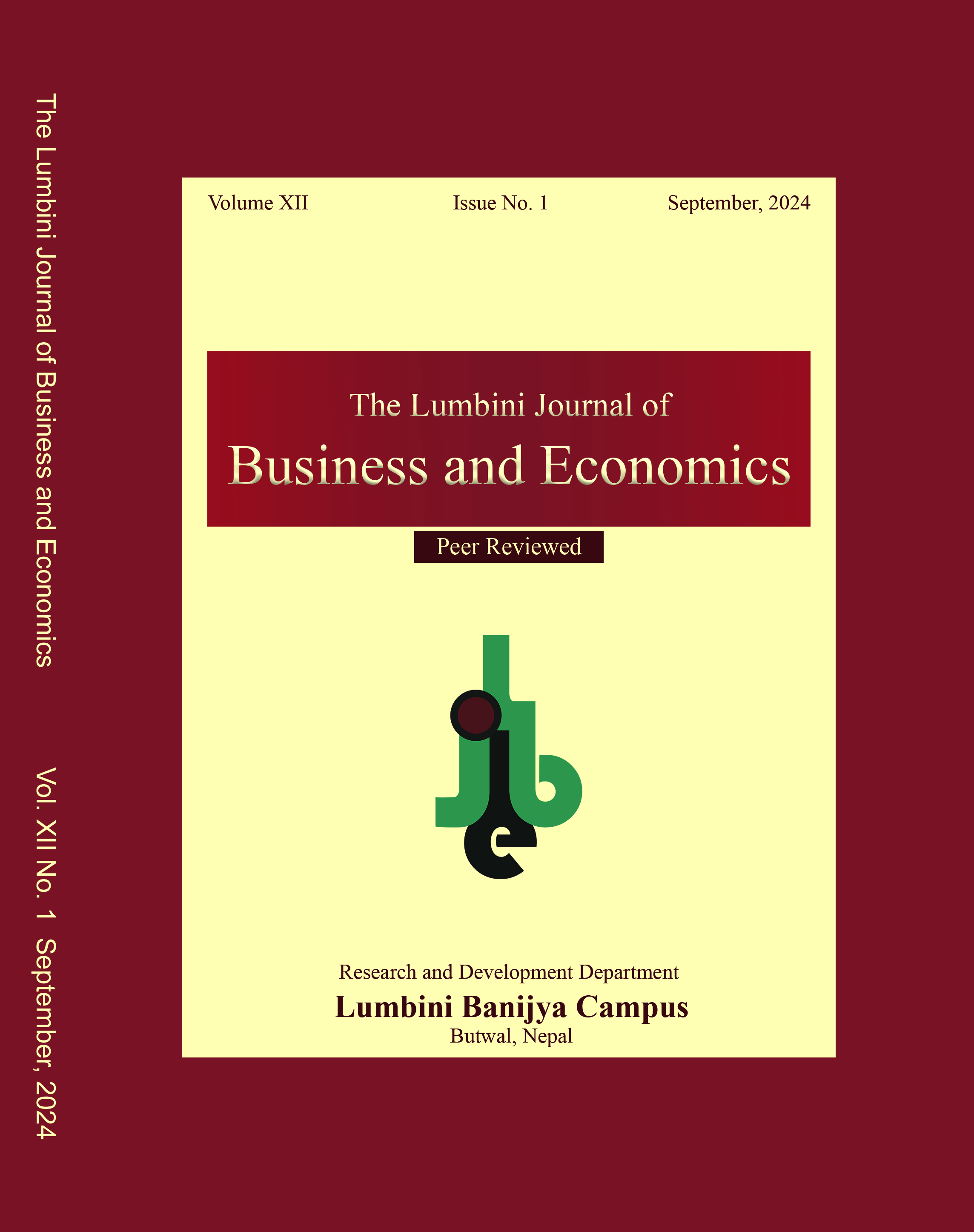Effect of Capital Adequacy, Bank Size and Lending Interest Rate on Profitability of Commercial Banks in Nepal
DOI:
https://doi.org/10.3126/ljbe.v12i1.70327Keywords:
Return on assets, lending interest rate, capital adequacy ratio and bank sizeAbstract
Purpose : This study aims to examine the effect of capital adequacy, bank size and lending interest rate on the profitability of commercial banks in Nepal.
Methods: This research used a combination of descriptive and causal comparative research design using secondary source of data obtained from the annual report of corresponding commercial banks. A panel data from the fiscal year 2013/14 to 2022/23 were obtained from six randomly selected commercial banks.
Results: The capital adequacy ratio exhibits a significant positive impact on ROA signifying that a robust capital base strengthens financial stability, lowers funding costs, and promotes profitable lending operations. The analysis reveals that bank size has negative effect on ROA but the effect is insignificant suggesting that variations in size do not substantially influence profitability, implying that other determinants are more critical in shaping financial performance. Furthermore, the results indicate a significant negative effect of lending interest rates on return on assets (ROA), which are attributed to factors such as increased borrower repayment capacity, reduced loan demand, higher non-performing loan risks, and elevated funding costs negatively impact overall bank profitability
Conclusion: Capital adequacy ratio plays a critical role in increasing bank profitability. Other factors such as bank size and lending interest rates need to be managed to optimize financial performance. Future research is necessary to explore these relationships in more diverse banking environments and consider additional variables to further understand the drivers of bank profitability.




